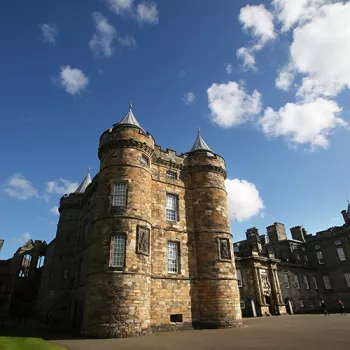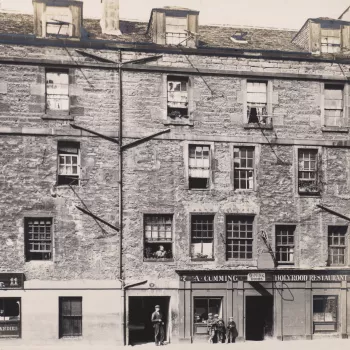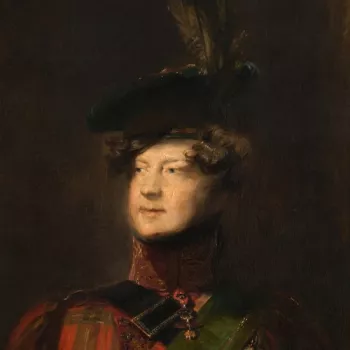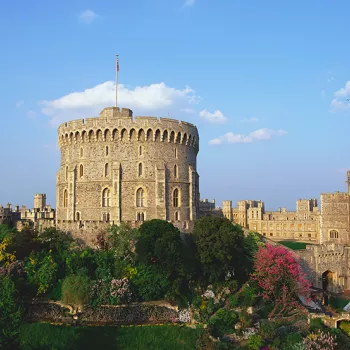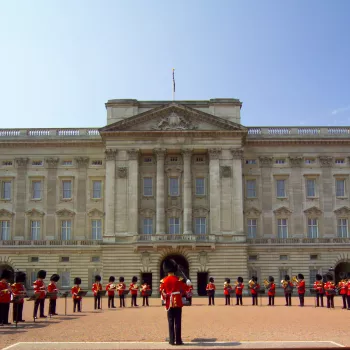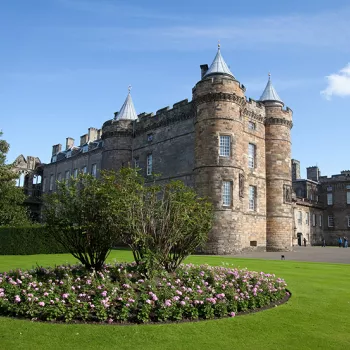The Palace of Holyroodhouse garden
The gardens at the Palace of Holyroodhouse have a long and varied history. The first recorded gardens at the Palace were the medieval gardens cared for by the monks of Holyrood Abbey.
When James IV built the first royal palace in 1503 and Holyroodhouse became the main royal residence in Scotland, the gardens were the setting for tournaments, hunting, hawking and archery. There was even a tennis court and a menagerie with a range of animals, including lions, tigers and bears.
By the time Mary, Queen of Scots lived at the Palace there was a series of enclosed gardens, including a walled Privy Garden to the north. Mary often practised archery, hawking, hunting (for which wild boars were brought from France), bowls and tennis in the garden.
The Physic Garden
A small physic garden was established at the Palace in 1670 and became the origins of Edinburgh’s Royal Botanic Garden. The 17th-century garden was the first of its kind in Scotland and was created to teach students about the medicinal properties of plants and to provide pharmacists with fresh materials.
It was established by two founding members of the Royal College of Physicians of Edinburgh, Sir Robert Sibbald and Dr Andrew Balfour. A young, self-taught gardener, James Sutherland, was hired to care for the plants. Four years later Sutherland was made the first ever Regius Keeper, a title now given to the head of the Royal Botanic Garden Edinburgh.
Five years after the first physic garden was created at the Palace, the plants were moved to a much bigger site at Trinity Hospital and then to Leith in Scotland. In 1820 the garden was established in Inverleith, where today the Royal Botanic Garden Edinburgh covers over 70 acres and displays more than 13,000 plant species, while continuing its world-leading plant science, horticulture and education.
While at the site at Trinity Hospital, Sutherland recorded the plants that grew in the physic garden in Scotland's first botanical publication, Hortus Medicus Edinburgensis. He describes plants such as the Common Hounds-Tongue which was used to treat everything from piles and persistent coughs to baldness.
A debtors' sanctuary
From the 1500s, Holyrood Abbey offered the right of sanctuary for those who could not pay their debts. The debtors, known as ‘Abbey lairds’, found shelter from their creditors within the Abbey boundaries, which included Holyrood Park and the buildings on Abbey Strand. At the height of its occupation as a sanctuary, Holyrood sheltered around 6,500 debtors, including members of the aristocracy. Although imprisonment for debt was abolished in 1880, the ancient right of sanctuary within the grounds of Holyrood has never been repealed.
Rejuvenated gardens
By the time Queen Victoria, Prince Albert and their family stayed at the Palace, the gardens were overgrown, and the surrounding area consisted of slums and industrial buildings. Prince Albert created a new carriage approach to the north of the Palace, sweeping away the Privy Garden in the process, and established new planting areas to the north and south.
The Palace gardens have been improved and updated and today seven greenhouses supply the Palace with flowers for official events throughout the year. This included Queen Elizabeth II's annual Garden Party. A tradition established by King George V and Queen Mary, the Garden Party is a special occasion where up to 8,000 guests are invited to the Palace. On the day, 15,000 cups of tea, 9,000 strawberry tarts and 7,000 sandwiches are consumed.
A new garden
The Palace of Holyroodhouse is everchanging and in 2020 a programme of works was completed which included a new public garden. The garden has three distinct areas, each representing a phase in the Palace’s 900-year history.
The new physic garden contains medicinal and culinary plants that would have grown in the 17th-century garden. These include fennel – once used to aid eyesight, to treat the bites of snakes, and borage, which, when added to wine, was said to impart courage and treat eye problems and heart disease. The garden is used by school and community groups to explore how plants have been used to improve health and well-being.
Alongside the re-imagined physic garden, there is a flowering meadow evoking the 15th-century monastic garden of Holyrood Abbey, the Palace's first recorded garden.


